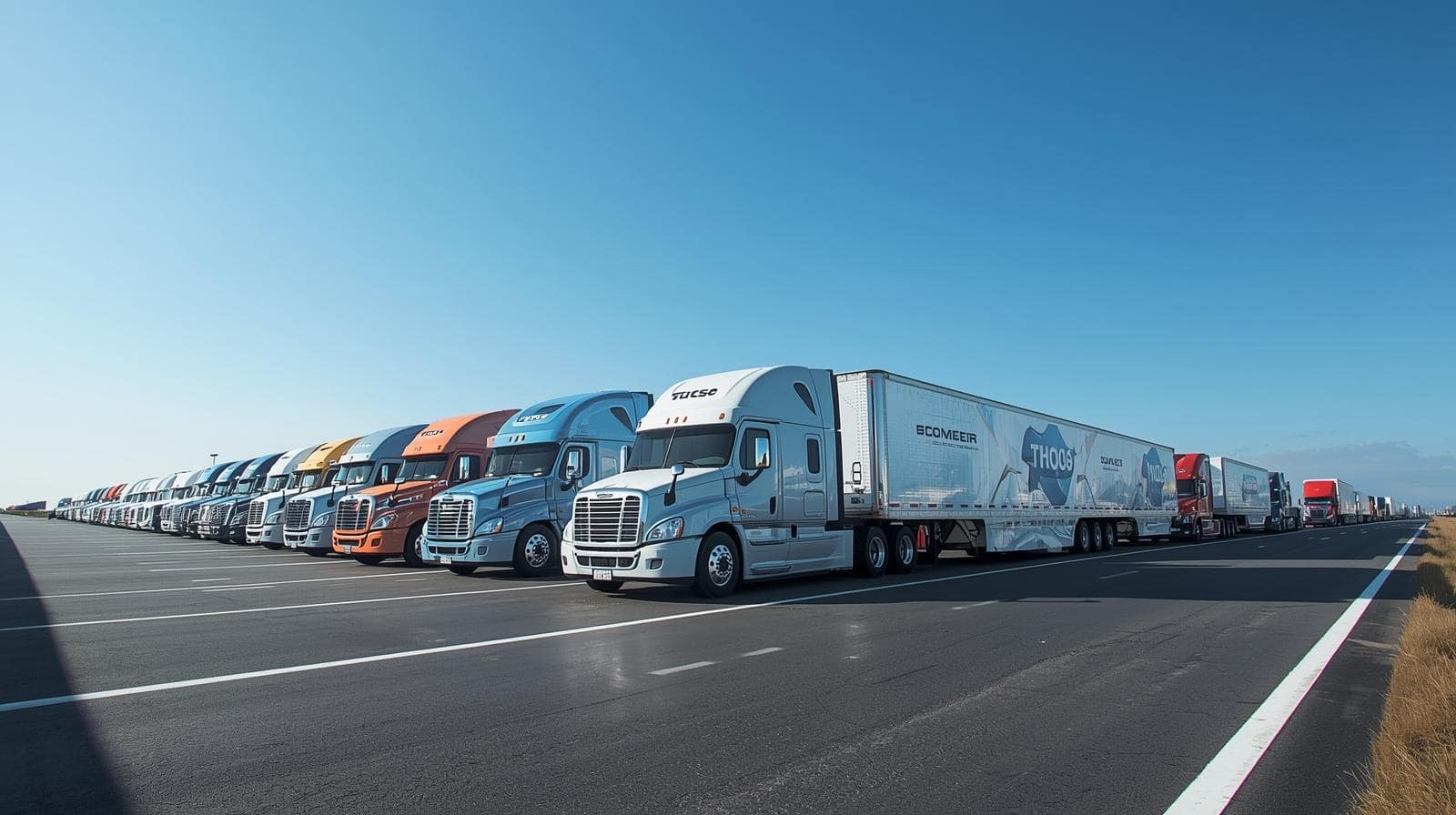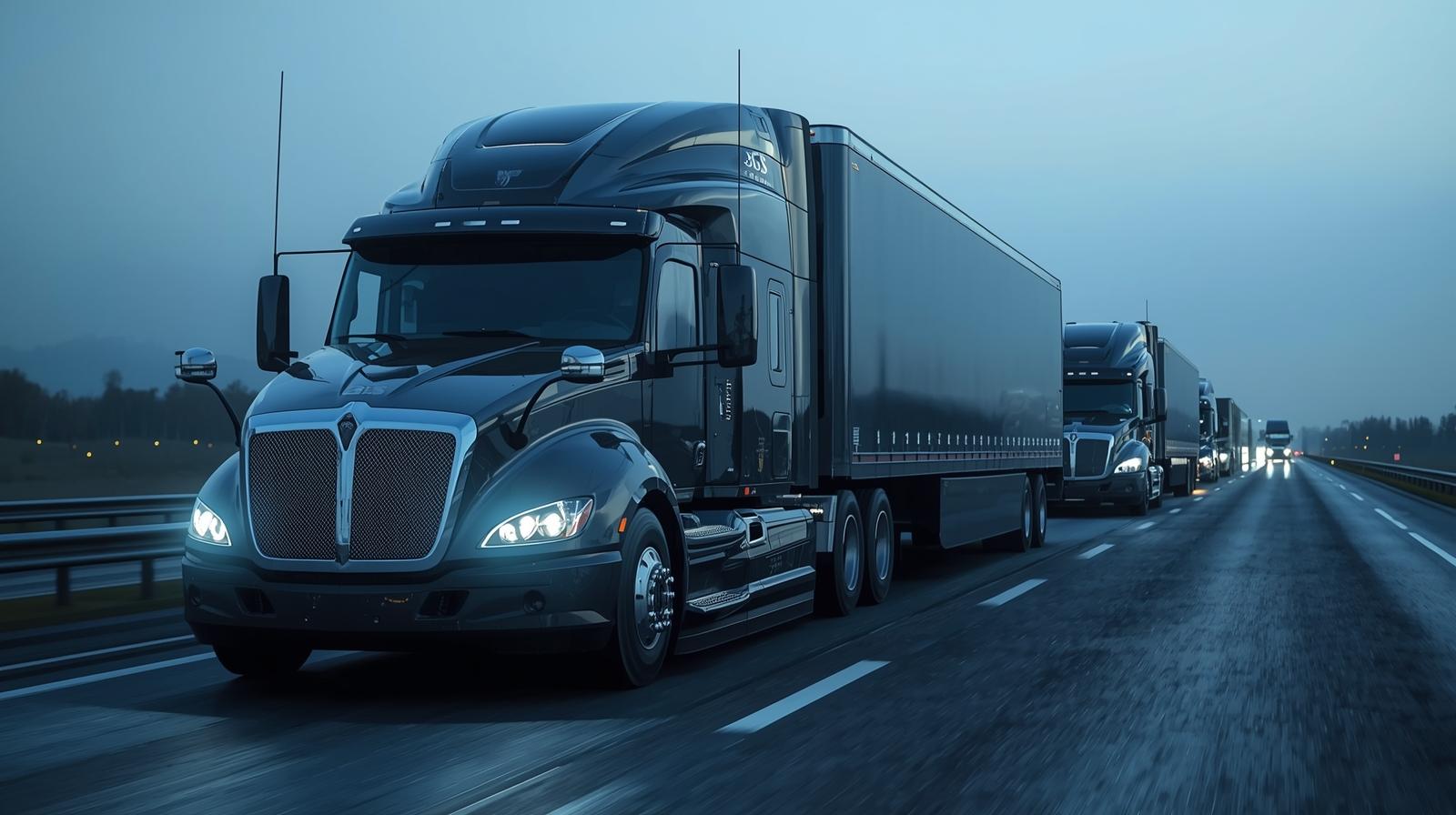Contents
- Why Fleet Security Matters
- What is Geofencing in Fleet Management?
- Why Geofencing is Critical for Fleet Security
- How Real-Time Alert Systems Work
- Combined Benefits of Geofencing and Alerts
- Industry-Specific Use Cases
- Integration with Fleet Management Systems
- Best Practices for Implementation
- Challenges and Considerations
- Future of Fleet Security: AI and Predictive Analytics
- FAQ
Why Fleet Security Matters
Managing a fleet today involves more than scheduling drivers and maintaining vehicles. With fleets spread across cities, countries, or even continents, risks multiply: theft, unauthorized use, compliance violations, and costly downtime. According to industry studies, fleet theft alone costs businesses billions annually, not counting productivity losses and insurance premiums.
This is why modern operators turn to geofencing technology and real-time alert systems. Together, they shift fleet management from reactive problem-solving to proactive risk prevention, ensuring assets are always secure and optimized for business growth.
What is Geofencing in Fleet Management?
Geofencing is a virtual perimeter created using GPS, RFID, or cellular technology. Once a zone is set, the system can monitor vehicles or equipment entering and leaving that zone.
For fleet operators, this means:
- Setting safe zones such as depots, warehouses, airports, or customer delivery areas.
- Monitoring no-go zones like restricted roads, unsafe neighborhoods, or competitor facilities.
- Automating alerts and logs whenever vehicles deviate from assigned zones.
Unlike manual tracking, geofencing runs in the background 24/7, offering peace of mind without constant monitoring.
Why Geofencing is Critical for Fleet Security
1. Theft Prevention
If a vehicle or piece of equipment leaves a defined geofence at 2 a.m., an immediate alert is triggered. Managers can respond quickly, notifying law enforcement or activating immobilizers.
2. Regulatory Compliance
Industries such as aviation, logistics, and construction must operate within strict boundaries. Geofencing ensures compliance automatically-reducing fines, penalties, and legal risks.
3. Route Optimization
By setting geofences around approved delivery corridors, operators can detect detours, reducing wasted fuel and late deliveries.
4. Driver Accountability
Unauthorized personal use of vehicles is a common issue. Geofencing helps enforce business-only policies, encouraging drivers to stay compliant.
How Real-Time Alert Systems Work
While geofencing creates the digital boundaries, alert systems are the messengers.
Types of Alerts:
- Unauthorized Access Alerts. Detects when a vehicle leaves a restricted area.
- Safety Alerts. Triggered by speeding, harsh acceleration, or dangerous routes.
- Maintenance Alerts. Predictive systems flag overuse, extended idling, or anomalies in vehicle health.
- Compliance Alerts. Inform managers if drivers enter zones with regulatory restrictions (e.g., low-emission areas in European cities).
Delivery of Alerts
- SMS or Push Notifications for immediate response.
- Email Summaries for daily/weekly reports.
- Dashboard Pop-Ups for fleet control centers.
Instant alerts make the difference between losing a truck and stopping theft in progress.
Combined Benefits of Geofencing and Alerts
When integrated, these technologies create a powerful safety net for fleet managers:
- 24/7 Asset Security. Every movement is tracked.
- Operational Efficiency. Routes optimized, costs lowered.
- Smarter Decisions. Data-driven insights on driver performance and asset utilization.
- Lower Costs. Reduced theft, fuel waste, and insurance premiums.
- Customer Satisfaction. On-time deliveries and reliable service.
Industry-Specific Use Cases
Logistics & Delivery
Delivery fleets can be geofenced to city zones with specific delivery windows, ensuring drivers follow schedules and avoid fines.
Construction & Mining
Geofencing secures millions in heavy equipment from unauthorized relocation, while alerts prevent nighttime theft.
Aviation Ground Support
Baggage carts, refueling trucks, and service vehicles are restricted to airport zones, improving safety and compliance.
Corporate Fleets
Company cars used for personal errands inflate costs. Geofencing ensures vehicles are used for business purposes only.
Integration with Fleet Management Systems
Modern fleet management software goes beyond geofencing and alerts. It integrates:
- Live GPS tracking for real-time location.
- Fuel consumption monitoring to reduce wastage.
- Driver behavior analytics to promote safe practices.
- Maintenance scheduling for preventive upkeep.
The real power lies in combining all these tools into one platform, allowing managers to view, analyze, and act instantly.
Best Practices for Implementation
- Define Smart Geofences
- Avoid overly broad areas that trigger irrelevant alerts.
- Focus on high-value areas like depots, customer sites, and restricted zones.
- Customize Alerts
- Not every movement should cause an alarm.
- Prioritize theft, safety, and compliance alerts.
- Train Drivers and Staff
- Explain how geofencing benefits them (e.g., safety, theft prevention).
- Avoid creating a “surveillance culture”-emphasize protection, not punishment.
- Explain how geofencing benefits them (e.g., safety, theft prevention).
- Review Data Regularly
- Use monthly or quarterly reports to refine zones and reduce false positives.
- Adjust thresholds based on evolving business needs.
Challenges and Considerations
- False Positives. Poorly defined zones may generate unnecessary alerts.
- Privacy Concerns. Employees may feel over-monitored; communication is key.
- Technology Costs. Initial investment can be high, but ROI typically comes within months through theft prevention and efficiency gains.
- Scalability. Ensure the chosen system can expand with fleet growth.
Future of Fleet Security: AI and Predictive Analytics
The next evolution of geofencing and alert systems involves AI-driven insights:
- Predictive geofencing that anticipates theft attempts.
- Machine learning that adjusts geofence boundaries dynamically.
- Integration with smart cities for compliance with traffic and environmental rules.
This will move fleet management from reactive alerts to proactive prevention.
Protecting a fleet in today’s fast-paced environment requires more than locks and manual monitoring. Geofencing and real-time alert systems give operators unprecedented visibility and control, ensuring assets are secure, compliant, and efficient.
By embracing these technologies, businesses move from a reactive stance-responding after issues occur-to a proactive strategy, preventing losses before they happen. For any organization that values security, compliance, and profitability, geofencing with alerts is no longer optional-it’s essential.
FAQ
What is the main benefit of geofencing in fleet management?
Geofencing prevents theft, enforces route compliance, and improves visibility by creating virtual boundaries around vehicles and equipment.
How do alert systems work with geofencing?
Alert systems notify managers instantly when vehicles breach geofences, drive unsafely, or need maintenance-via SMS, email, or dashboards.
Is geofencing expensive to implement?
While there is an upfront investment, most companies see ROI quickly through theft prevention, insurance savings, and operational efficiency.
Can employees’ privacy be protected with fleet tracking?
Yes. By setting clear policies and limiting tracking to business hours and areas, fleets can balance monitoring with employee privacy.










